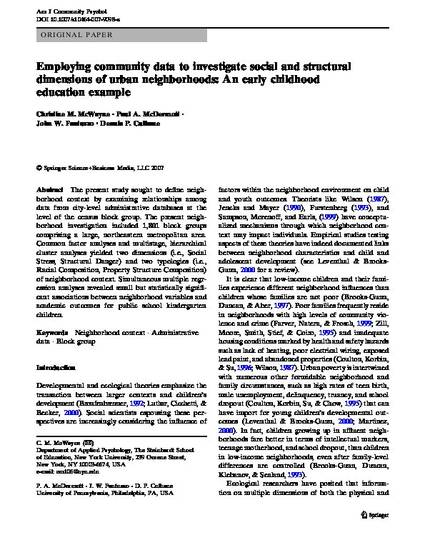
Article
Employing community data to investigate social and structural dimensions of urban neighborhoods: An early childhood education example
Departmental Papers (SPP)
Document Type
Journal Article
Date of this Version
3-1-2007
Abstract
The present study sought to define neighborhood context by examining relationships among data from city-level administrative databases at the level of the census block group. The present neighborhood investigation included 1,801 block groups comprising a large, northeastern metropolitan area. Common factor analyses and multistage, hierarchical cluster analyses yielded two dimensions (i.e., Social Stress, Structural Danger) and two typologies (i.e., Racial Composition, Property Structure Composition) of neighborhood context. Simultaneous multiple regression analyses revealed small but statistically significant associations between neighborhood variables and academic outcomes for public school kindergarten children.
Keywords
- neighborhood context,
- administrative data,
- block group
Citation Information
Christine P McWayne, Paul A McDermott, John Fantuzzo and Dennis P. Culhane. "Employing community data to investigate social and structural dimensions of urban neighborhoods: An early childhood education example" (2007) Available at: http://works.bepress.com/dennis_culhane/12/

Publisher URL: http://dx.doi.org/10.1007/s10464-007-9098-z